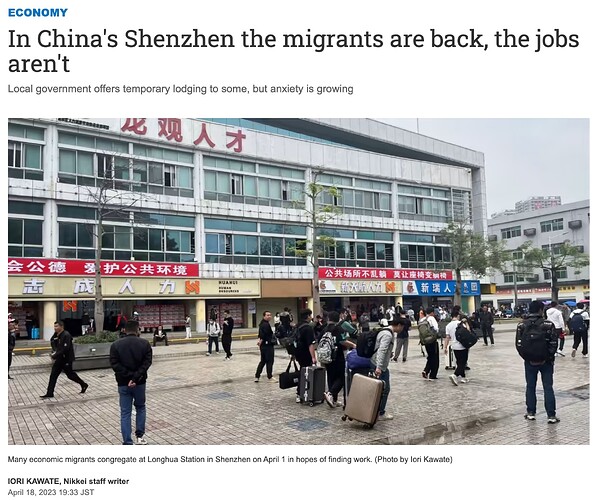-
中国1-3月的国内生产总值有所增长,但汽车和家电的生产和销售持平。自零消费政策取消后,求职者蜂拥而至,但制造业工厂的运营还没有回升到足以雇佣他们。中国城市的失业率在第一季度略有下降。
-
地方政府正在努力解决失业问题,广东省提出了一项计划,在2025年底前将30万年轻人送到农村。制造业不振是劳动力市场疲软的一个原因,汽车和家电等耐用品的销售停滞不前。出口的前景也仍然非常不确定。
-
较高的通货膨胀率削弱了对中国产品的海外需求,而与美国的贸易战则让人更加忧心忡忡。海关当局警告说,中国的对外贸易面临进一步的困难。自零消费政策结束以来,经济复苏并不均衡,让企业和家庭感到焦虑。
-
China’s GDP expanded in the January to March quarter, but production and sales of automobiles and home appliances were flat. Job seekers have flocked back since the zero-COVID policy was lifted, but operations at manufacturing plants have yet to rebound enough to hire them. Unemployment in Chinese cities declined slightly in the first quarter.
-
Local governments are trying to tackle joblessness, with Guangdong province coming up with a plan to send 300,000 young people to rural villages by the end of 2025. Sluggish manufacturing is one reason for the soft labor market, with sales of durable goods such as cars and home appliances being stagnant. The outlook for exports remains highly uncertain as well.
-
Higher inflation has sapped overseas demand for Chinese products, and the trade war with the U.S. is adding to the gloom. Customs authorities warn China’s external trade faces further difficulties. The economic recovery has been uneven since the end of the zero-COVID policy, leaving businesses and households with anxiety.
